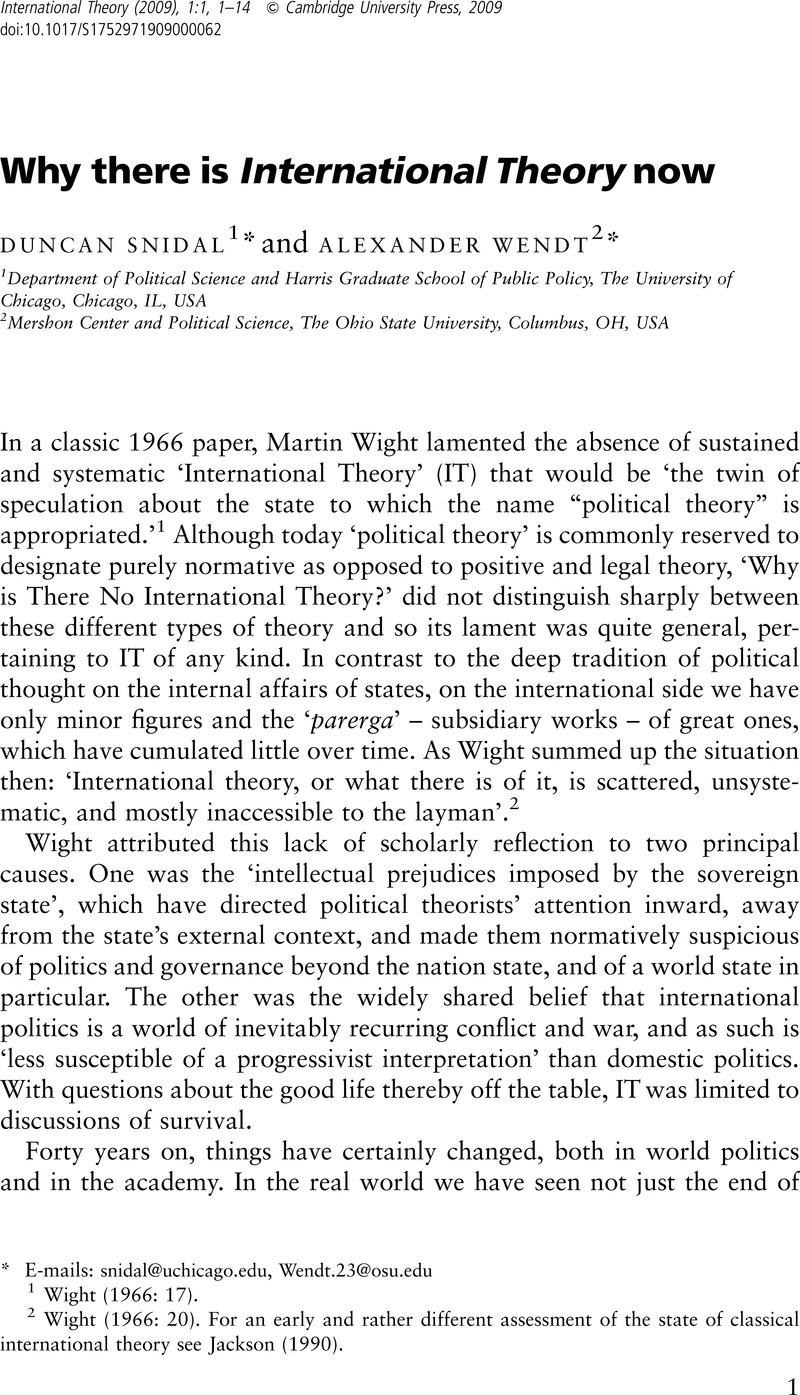Crossref Citations
This article has been cited by the following publications. This list is generated based on data provided by Crossref.
Sylvest, Casper
2010.
Realism and international law: the challenge of John H. Herz.
International Theory,
Vol. 2,
Issue. 3,
p.
410.
Fierke, K.M.
2011.
Cutting the fuse: the explosion of global suicide terrorism and how to stop it, by Robert A. Pape and James K. Feldman.
Critical Studies on Terrorism,
Vol. 4,
Issue. 3,
p.
469.
Urpelainen, Johannes
2011.
The enforcement–exploitation trade-off in international cooperation between weak and powerful states.
European Journal of International Relations,
Vol. 17,
Issue. 4,
p.
631.
Price, Richard M.
Snyder, Jack
Vinjamuri, Leslie
Erskine, Toni
and
Rengger, Nicholas
2012.
Special forum on Moral Limit and Possibility in World Politics.
International Theory,
Vol. 4,
Issue. 3,
p.
430.
Dunoff, Jeffrey L.
and
Pollack, Mark A.
2012.
What Can International Relations Learn from International Law?.
SSRN Electronic Journal,
Bertucci, Mariano E.
2013.
Scholarly Research on U.S.-Latin American Relations: Where Does the Field Stand?.
Latin American Politics and Society,
Vol. 55,
Issue. 04,
p.
119.
Gomes, Bjorn
2014.
The Encyclopedia of Political Thought.
p.
1869.
O’Loughlin, Antony
2014.
Overcoming Poststructuralism.
p.
1.
Fröhlich, Manuel
2015.
Handbuch Internationale Beziehungen.
p.
1.
Weber, Cynthia
2015.
Why is there no Queer International Theory?.
European Journal of International Relations,
Vol. 21,
Issue. 1,
p.
27.
Karp, David Jason
and
Mills, Kurt
2015.
Human Rights Protection in Global Politics.
p.
3.
Fröhlich, Manuel
2016.
Handbuch Internationale Beziehungen.
p.
1.
Kristensen, Peter Marcus
2016.
Discipline admonished: On International Relations fragmentation and the disciplinary politics of stocktaking.
European Journal of International Relations,
Vol. 22,
Issue. 2,
p.
243.
Gallagher, Adrian
2016.
Conceptualizing humanity in the English School.
International Theory,
Vol. 8,
Issue. 2,
p.
341.
Fröhlich, Manuel
2017.
Handbuch Internationale Beziehungen.
p.
3.
James, Patrick
2019.
Systemist International Relations.
International Studies Quarterly,
Vol. 63,
Issue. 4,
p.
781.
Ren, Xiao
2020.
Grown from within: Building a Chinese School of International Relations.
The Pacific Review,
Vol. 33,
Issue. 3-4,
p.
386.
Ren, Mu
2021.
Beyond Rigidity.
p.
1.
Shahi, Deepshikha
2023.
Global IR Research Programme.
p.
23.
Fröhlich, Manuel
2023.
Handbuch Internationale Beziehungen.
p.
1.





